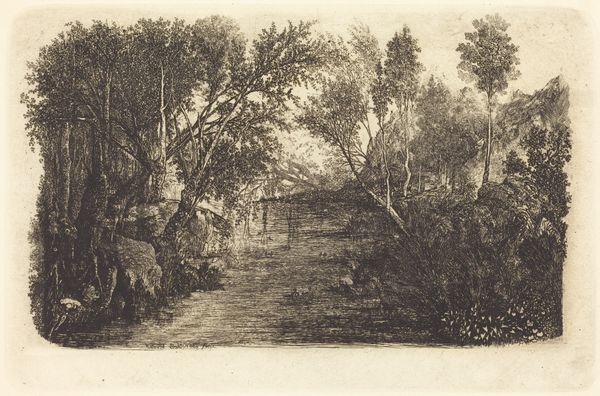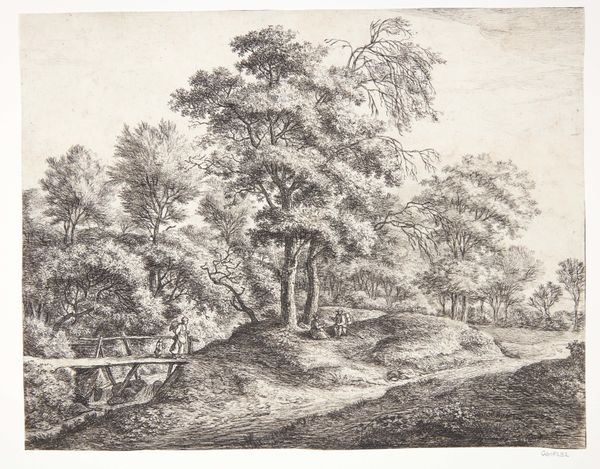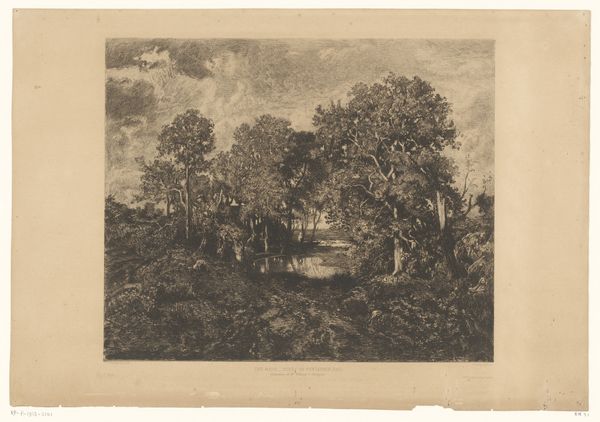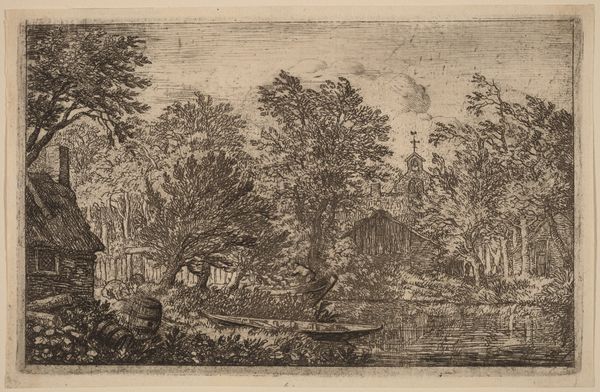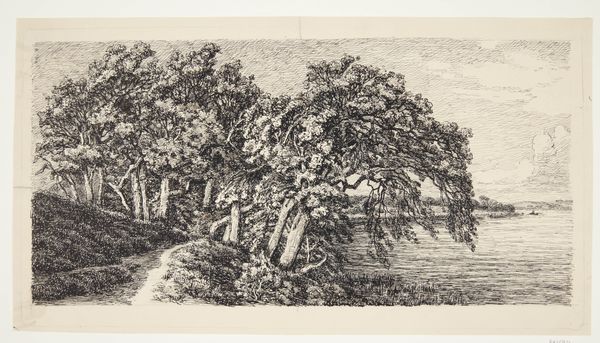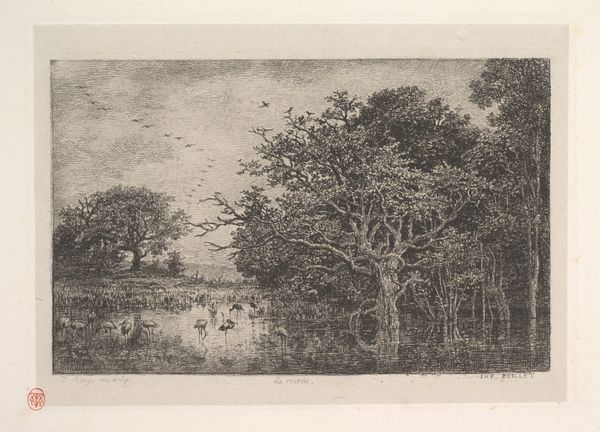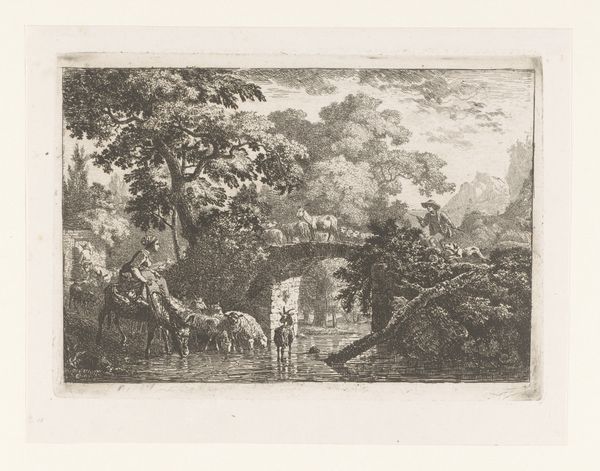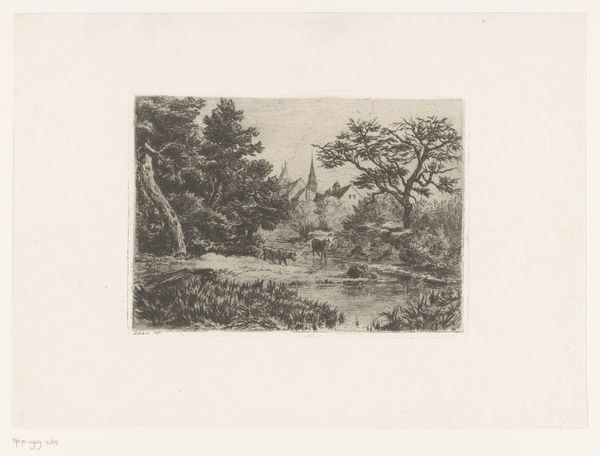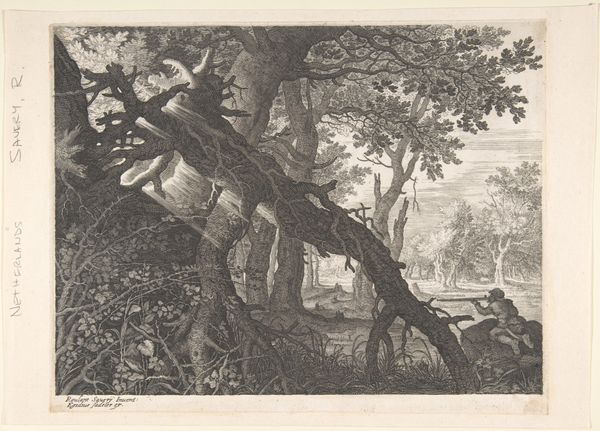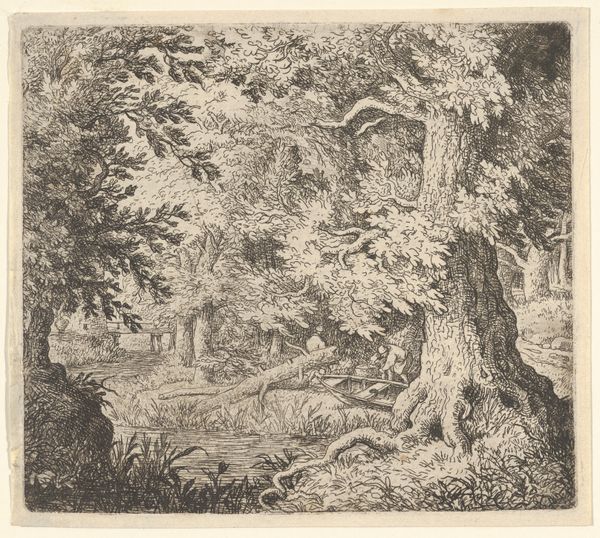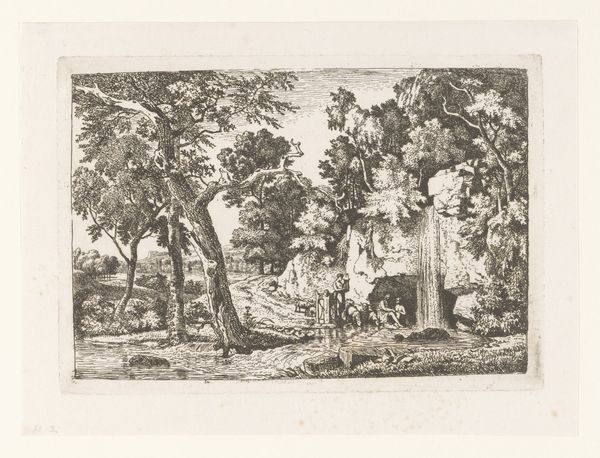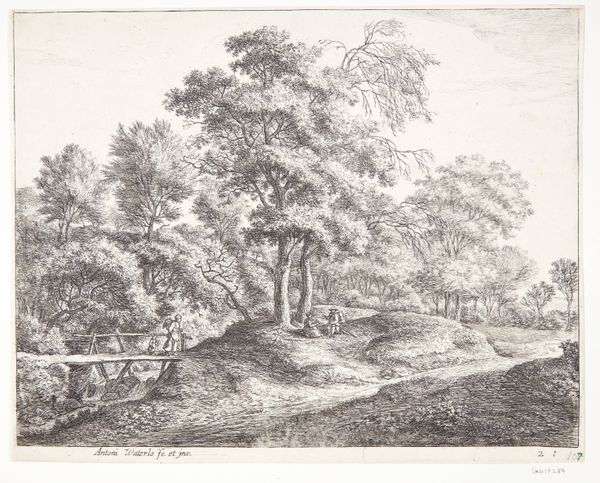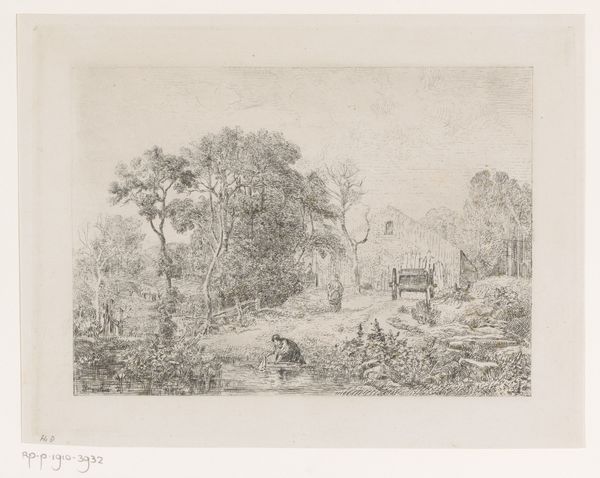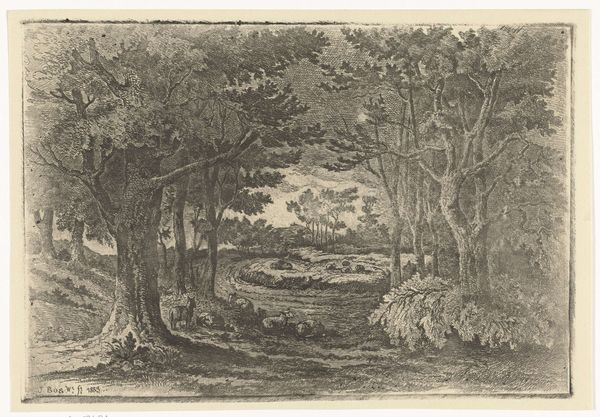
print, etching
# print
#
etching
#
landscape
Dimensions: 209 mm (height) x 395 mm (width) (plademål)
Curator: Louise Ravn-Hansen's "Gamle ege ved Hald Sø," which translates to "Old Oaks by Hald Lake," made in 1903. The piece is an etching currently held at the SMK, the National Gallery of Denmark. Editor: The atmosphere is heavy, somber even. The trees feel old, burdened by history, their branches drooping towards the water. It's intensely detailed. Curator: Considering it's an etching, I agree. The intense detail is noteworthy, and Hansen’s choice of subject, the old oak, speaks to larger narratives. Oaks often become symbols of endurance, national identity, and perhaps even resistance. What I see is Hansen grappling with her relationship to her own cultural moment in the wake of enormous socio-political shifts and the legacy of Danish art. Editor: Looking at it through the lens of production, the work involved in such a detailed etching must have been substantial. The process, acid biting into metal to create the image, echoes the relentless processes of time acting on the very oaks depicted. There's a certain violence implied in its creation. And of course, etching is part of the larger history of reproductive media—accessible to a wider public perhaps than an original painting would have been. Curator: That reproductive accessibility, like the spread of ideas, does become interesting, doesn’t it? Hansen was a woman working in a male-dominated artistic sphere, landscape as a genre closely bound to constructions of nationhood—it raises complex questions about whose version of nature is being valued, circulated. How is her place in the system? Where does her view reside? Editor: Exactly. Etching as a technique also allowed women like Hansen entrance into fine art. You also consider the economy and the art market when judging art's cultural significance. Its portability. Where might this have hung? Who acquired it? All factors relating it back to larger structures of production. Curator: I agree. By observing the medium itself, as you've eloquently said, we see past only the beautiful trees and water. We get a clear picture of Danish landscape aesthetics during an extremely pivotal period. Editor: Indeed. Recognizing how something is crafted provides greater context for not only the artwork, but also for us to better reflect on what it tells us about work and those doing the hard graft involved.
Comments
No comments
Be the first to comment and join the conversation on the ultimate creative platform.
